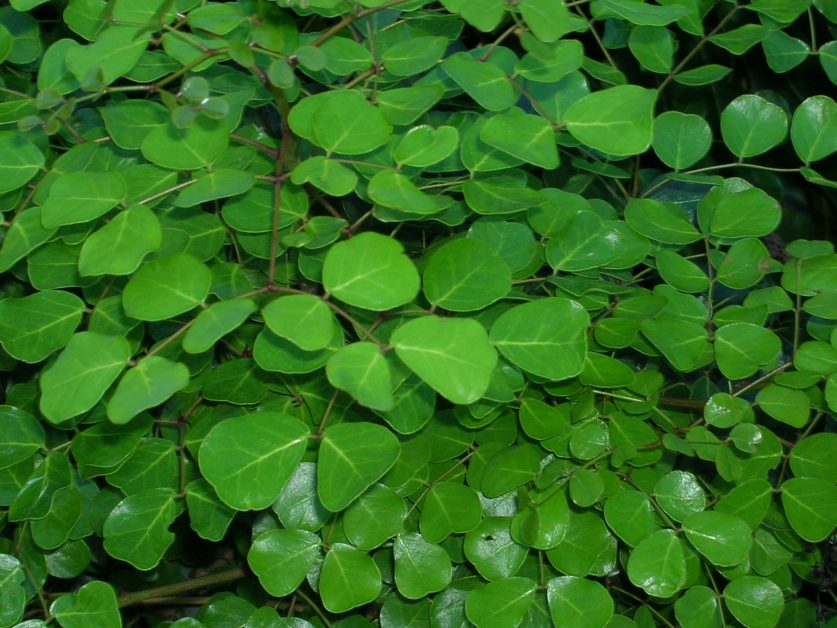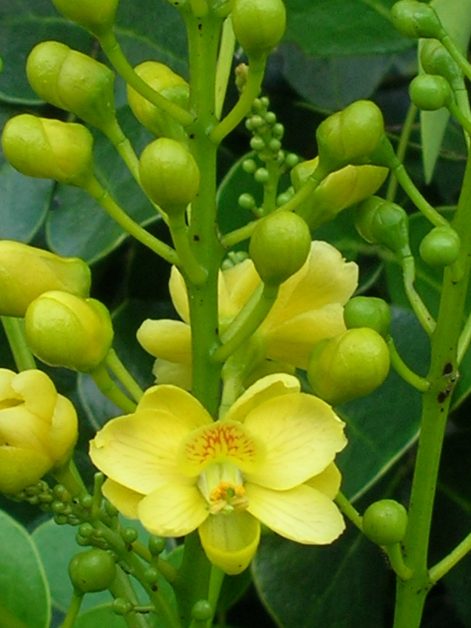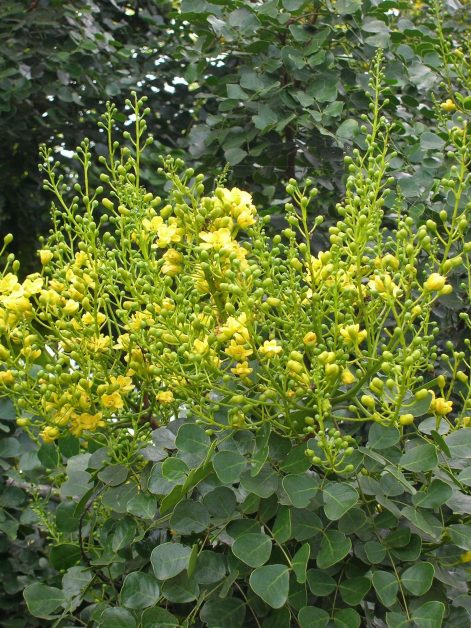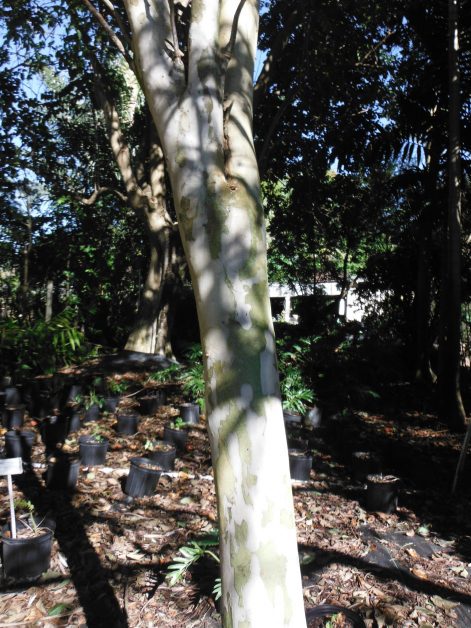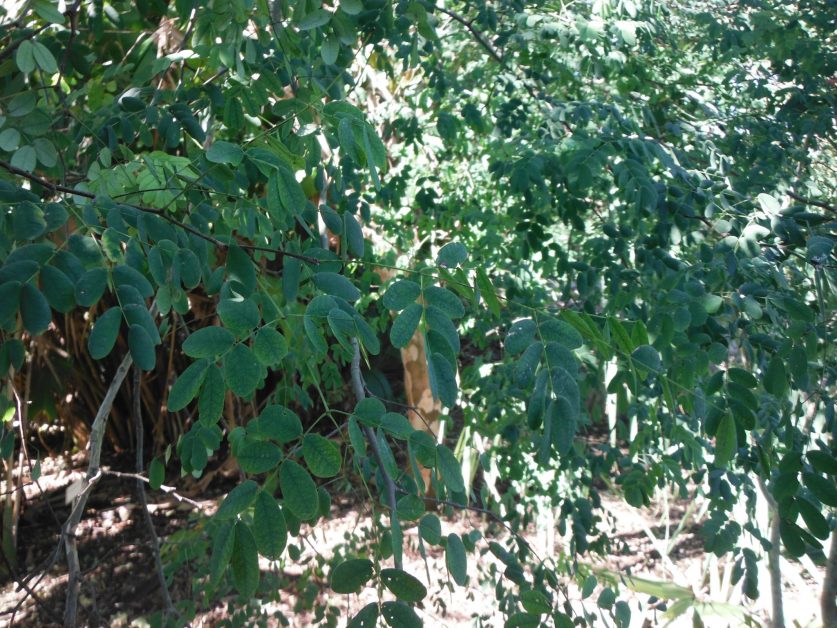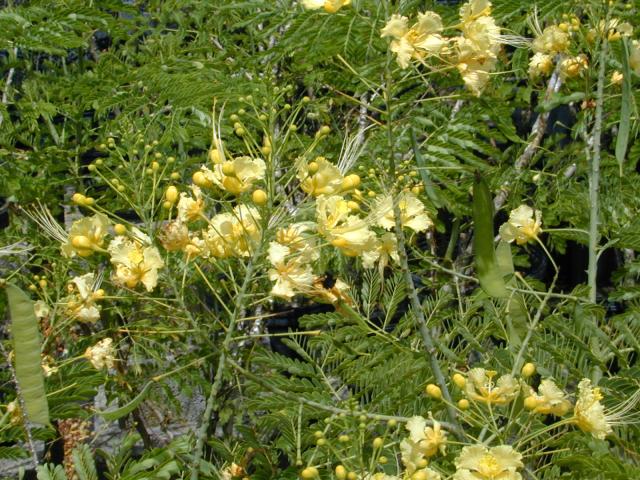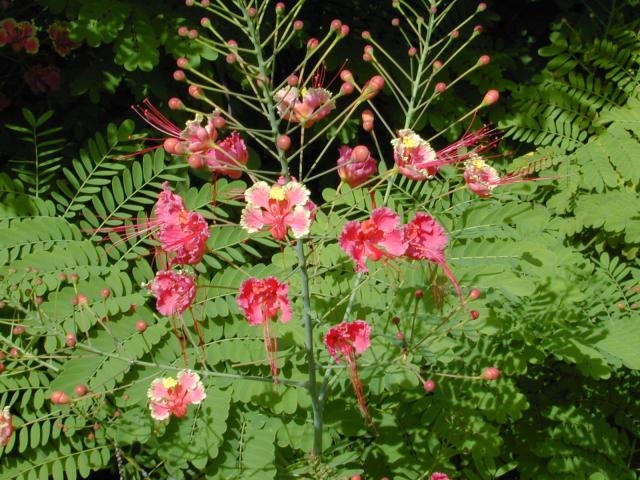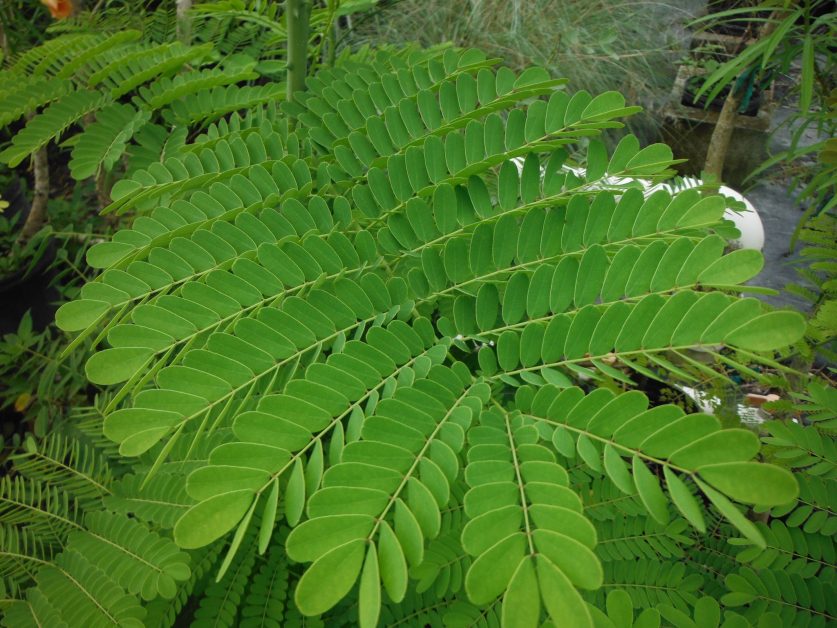A Brief Look at Caesalpinia
Caesalpinia is one of the more interesting genera of ornamental trees belonging to the pea family, known botanically as Fabaceae. There is considerable disagreement about the number of species in the genus – it’s somewhere between 70 and 165 – but Richard Lyons’ Nursery will acquaint you with three that have proven desirable and reliable in our part of the world.
Caesalpinia echinata – Brazilwood, or Pau-Brasil, has garnered world-wide fame for the quality of its dense heartwood, which has long been crafted into bows for musical instruments. It is also known for its red dye, brazilin. So important was Brazilwood commercially in the early 16th century that its native land came to be named for it. The name Brasileiros is now used for the citizens of the country, but originally it was the name applied to the people who collected the dyewood. C. echinata was once abundant in a lengthy stretch along the coast of Brazil, but has disappeared from most of its native range and is now rated Endangered by the IUCN. The tree reaches about 55 ft. at maturity in its homeland, but can be expected to top out at something less than that in southern Florida. Under its brown exfoliating bark is the prized blood-red heartwood. Its flowers, usually yellow with a dark red blotch, are very fragrant. Small thorns cover the branches, leaves and fruit.
Caesalpinia granadillo – The Bridalveil Tree is another Caesalpinia species which produces an attractive exfoliating bark. In fact, the tree is valued not so much for its yellow flowers as for its bark and vase-like growth habit. The smooth brown bark peels off to reveal the cream-colored surface underneath. In southern Florida, the Bridalveil reaches 25-30 ft. at maturity, producing a dense crown of finely-textured pinnate leaves that creates the lacy look responsible for the tree’s common name. The small leaflets ensure that no messy litter accumulates under the tree.
C. granadillo in its early years benefits from strategic pruning to improve its structure and exhibit its trunk to best advantage. In fact, early attention prevents having to cut undesired branches later on, when pruning wounds would be more noticeable. Given a full-sun exposure, the Bridalveil Tree is a very undemanding plant. It can grow well in a wide variety of soils, so long as they are well-drained, and it is moderately drought-tolerant. If that weren’t enough, the species is virtually pest-free.
Caesalpinia pulcherrima – This variable species is commonly known as the Pride of Barbados, Peacock Flower, or, inaccurately, Dwarf Poinciana. It has become widespread in the tropics, but its origin was probably the West Indies and northern South America. It flowers prolifically, and the more common hues of its 2-in. blooms are orange-red, yellow, white and pink.
The ultimate appearance of this species depends on the attention given to it. If the owner does judicious pruning, C. pulcherrima can be groomed into a tree reaching around 20 ft. tall. If the owner has a more laissez faire approach, the plant will become a fairly sprawling shrub to about 10-12 ft. For best flowering, the Pride of Barbados should be planted in full sun, though it can handle some shade. It is not particular about soil. Because of its spines, the plant should be located on sites not close to foot traffic. Despite the tropical origin of C. pulcherrima, it can be grown even in some places where it freezes to the ground in the winter, because roots are said to be able to survive 15° nights and regenerate in the spring.
- Caesalpinia echinata (Brazil Redwood)
- Caesalpinia echinata (Brazil Redwood)
- Caesalpinia echinata (Brazil Redwood)
- Caesalpinia granadillo (Bridalveil Tree)
- Caesalpinia granadillo (Bridalveil Tree)
- Caesalpinia granadillo (Bridalveil Tree)
- Caesalpinia pulcherrima (Pride of Barbados)
- Caesalpinia pulcherrima (Pride of Barbados)
- Caesalpinia pulcherrima (Pride of Barbados)
- Caesalpinia pulcherrima (Pride of Barbados)
